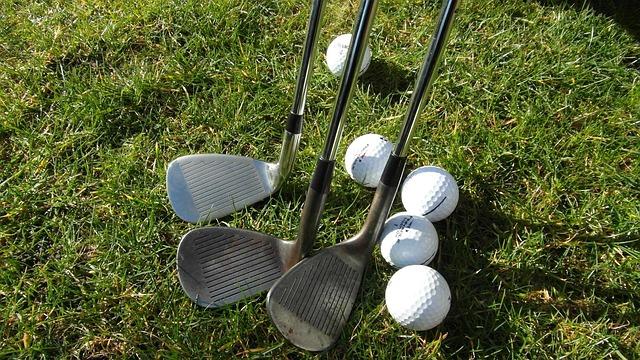A new breakthrough in golf equipment analysis has shifted attention away from the traditional focus on loft when it comes to predicting wedge performance. Recent data reveals that a lesser-known spec-the wedge’s bounce angle-is a surprisingly accurate indicator of distance control, challenging long-held assumptions among players and coaches. This revelation could redefine how golfers select and utilize their wedges on the course, emphasizing the importance of angles beyond loft in shaping shot precision and consistency.
The Critical Role of Bounce Angle in Mastering Distance Control with Wedges
When golfers obsess over wedge specs, loft typically dominates the conversation-but in reality, the bounce angle holds the key to dialing in precision. Bounce refers to the angle between the leading edge and the lowest point of the club’s sole, influencing how the club interacts with turf and sand. A higher bounce angle prevents the club from digging too deeply, allowing for cleaner contact and more consistent ball speed, especially from softer lies. Conversely, a lower bounce angle gives players the versatility to open the face and finesse delicate shots without the club bouncing off the ground prematurely.
Understanding and matching bounce to your swing type radically transforms distance control:
- Steep attack angles: Benefit from higher bounce wedges to avoid digging and excessive turf interaction.
- Shallow or sweeping swings: Prefer lower bounce for better turf glide and shot shaping.
- Versatility seekers: Opt for mid bounce wedges that handle a variety of lies comfortably.
| Bounce Angle | Ideal Swing Type | Distance Impact |
|---|---|---|
| 4° – 6° | Shallow/Sweep | Greater Spin, Controlled Roll |
| 8° – 12° | Neutral | Consistent Contact, Predictable Distance |
| 14°+ | Steep/Downward | Minimized Dig, Stable Distance |
How Shaft Length and Swing Speed Combine to Reveal True Distance Potential
When it comes to unlocking a wedge’s true distance potential, focusing solely on loft misses a critical piece of the puzzle: shaft length and swing speed. While loft defines the launch angle, it’s the interplay of the shaft’s length and how fast a player swings that ultimately determines the ball’s trajectory and roll out. Longer shafts generally allow for faster swing speeds, creating more momentum and thus potential for greater carry distance. However, simply equating longer shafts with better distance misses the nuance of control: an excessively long shaft can hamper accuracy and timing, reducing effective distance even if raw speed is gained.
- Shaft Flexibility: Optimizes energy transfer from swing to ball for consistent speed.
- Swing Tempo: Balances power and precision, essential for maximizing true distance.
- Length-to-Speed Ratio: Finds the sweet spot where length and speed marry to produce optimal carry.
Consider the table below where two hypothetical wedge setups are compared: one with a standard-length shaft at a moderate swing speed, and another with a slightly longer shaft but higher swing speed. The data highlights how minute differences in shaft length and swing tempo can magnify (or diminish) distance potential independently of loft changes.
| Wedge Setup | Shaft Length (inches) | Swing Speed (mph) | Carry Distance (yards) | Accuracy Impact |
|---|---|---|---|---|
| Standard | 35.5 | 75 | 85 | High |
| Extended | 36.5 | 80 | 90 | Moderate |
This dynamic reveals why gear shifts and wedge fittings shouldn’t be about loft alone. The subtle adjustments in shaft length paired with measured swing speeds emerge as the unseen specs that predict how far-and how consistently-you can distance control your wedge shots.
The Conclusion
As the understanding of distance control in golf continues to evolve, this hidden wedge specification offers a fresh perspective beyond the traditional focus on loft. By highlighting factors that have previously flown under the radar, players and coaches alike can refine their approach to dialing in precise yardages. While loft remains an important component, this newfound insight underscores the complexity of wedge performance and opens the door for smarter equipment choices and improved shot-making. As the game advances, keeping an eye on these subtle specs may prove just as crucial as the numbers stamped on the clubface.








